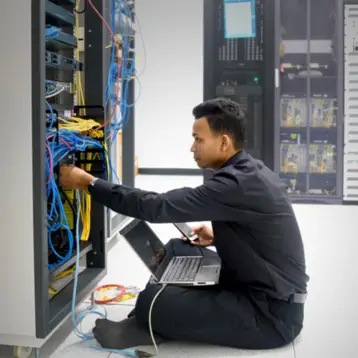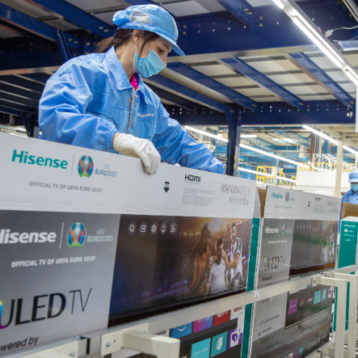Technical Background
|
Artigo is based on VIA’s all-in-one Pico-ITX motherboard – a board so small that a credit card can almost completely cover it. This board is the fruit of VIA’s ongoing shrinkage crusade which brought us the Mini-ITX (2001), Nano-ITX (2003), and the new generation Pico-ITX form factor introduced in CeBit 2007.
VIA managed to include all the features needed for a PC in a 3.9″x2.8″ Pico board, concentrating most functionality in the main low power C7 CPU and the VX700 chip which contains all the I/O functions from sound to video and networking.
|
At the moment VIA is a lone player in the Pico market with its EPIA PX board, but as with the Mini-ITX, Intel, Asus and AMD will most probably follow pretty soon as well.
Artigo is powered by a VIA C7 1 GHz Processor and an x86 compliant processor created by VIA labs. The main advantage of the C7 is its low power consumption and low heat dissipation requiring almost no cooling for smooth operation. This type of processor is gaining popularity and was recently adopted by HP in its Mini-Note 2133 model. This processor places VIA as a viable player in the low power consumer CPU market alongside Intel and AMD.
Overview Chassis
|
Artigo has 4 USB, audio, and mic connectors in the front, and LAN, RGB, and power connectors in the back. Additional extension cables for DVI, COM, and PS/2 connections are supplied in the package, though there is no apparent way to plug them in and still close the chassis without drilling an extra hole in it; then again this is a “do it yourself” kit, so it is possible to do this yourself. Also, two built-in chassis PS/2 ports would have come in handy, since wasting two USB ports on a keyboard and a mouse is just a shame. Then again the PS/2 is dying out gradually and that may just be a natural step towards its disappearance (plus you can always add extra USB ports externally).
Specifications
|
As mentioned earlier, the system is powered by a C7 1.0 GHz NanoBGA2 processor and all I/O functionality resides in a separate VX700 all-in-one processor. VIA chose only one DDR II SODIMM socket with up to 1GB, and we feel that two sockets would have been much more appropriate in today’s market but in all fairness it might have been too much of a tight squeeze in the already cramped pico-sized case. All video functionality is integrated in VIA’s UniChrom Pro II 3D/2D on board and the AGP graphics card with a built-in MPEG2/4 and WMV9 video acceleration. An interesting choice was made to put the IDE connector as the default connection for a hard drive and not the onboard existing SATA connector. Networking wise, the Pico board has a VIA VT6106S 10/100Mbps Ethernet controller which is more or less in sync with current low-end standard consumer equipment. To move into the corporate world a 1Gbps controller would have been more suitable option. The board is fully equipped with all I/O connectors needed, four USB 2.0 ports, COM port, mouse and keyboard PS/2, fan, LVDS/DVI,VGA port, and a full 7.1 channel audio output. For those of you needing more video integrated features, an additional expansion connector for an add-on card VT1625M adds also TV-out and video capture capabilities.
Artigo Specifications:
Processor: VIA C7 1.0GHz NanoBGA2 processor
Chipset: VIA VX700 advanced all-in-one system processor
System Memory: 1 DDRII 533 SODIMM socket (Up to 1GB)
Video Adapter: Integrated VIA UniChromeTM Pro II 3D/2D AGP graphics with MPEG-2/4 and WMV9 video decoding Accelerator
Onboard IDE: 1 UltraDMA 133/100 connector
Onboard SATA: 1 SATA connector
Onboard LAN: 1 VIA VT6106S 10/100 Mbps Fast Ethernet Controller
Onboard Audio: VIA VT1708A High Definition Audio Codec
Onboard I/O:
1 COM pin connector
1 Fan pin connector for CPU Fan
1 LVDS/DVI panel pin connector
1 Audio pin connector for line-out, line-in, MIC-in, S/PDIF in, and 7.1 channels audio output
1 Multimedia connector to support external TV-out interface,video capture port interface and low pin count interface. One VT1625M add-on card is required.
Back Panel: I/O 1 RJ45 LAN Port, 1 VGA Port
BIOS: Award BIOS (4/8Mbit flash memory)
Form Factor: Pico-ITX (3.9″ x 2.8”).
Artigo dimensions: 5.9” (L) x 4.3” (D) x 1.8” (H)/
Artigo weight:1.14 lbs
Installation and Performance
|
The sample Artigo VIA provided TFOT included a 40GB 2.5” Seagate ST940815A 5400RPM Hard drive with 512MB (DDRII 533) of memory.
VIA must be commended for their simple one page assembly instructions. This document is sufficient for the complete assembly of the unit and even a person with no prior hardware assembly experience can assemble the unit in less than 20 minutes.
|
Operating system installation requires an external installation device; either USB CD/DVD or a SATA. There is also the possibility of booting from a USB flash drive. Drivers for Windows XP are supplied with the unit and if Linux is your flavor, adequate drivers for most major distributions are available on VIA’s driver website.
Installing Windows XP Pro on the unit took slightly less than an hour to complete (probably due to the relatively slow 2.5″ hard drive used in our case). The standard Windows drivers did not identify three main components, the LAN, video, and sound properly. This was quickly fixed by using the supplied driver CD. Total boot time after a clean installation of Windows XP pro is 32 seconds from power on to full desktop mode which was faster than we expected.
System Tests: Phase I: Daily Tasks
Running many different types of video including Mpeg, Divx, and Xvid worked smoothly without any lag. Sound was also quite good; we had no problem listening to music with the device. Browsing the internet was a breeze and Office applications such as Microsoft Word 2007 and PowerPoint worked flawlessly even with a number of open documents. Parts of this review were actually written using Artigo and the feeling was similar to that of working with a notebook computer in many respects.
Phase II: Gaming
|
To check if the system can handle gaming, we tested it with a variety of games. Starting with the relatively CPU intensive “Need for Speed: Most Wanted” which gave unsatisfactory results as the main menu was hardly interactive, thus reaching the actual game proved to be a difficult task. Once there the game worked at around 5 frames per second or less. Older games like “Warcraft III” worked much better, and even “Unreal Tournament 2004” was somewhat playable though sluggish (on its lowest detail level). Running 3DMark 2001SE resulted in a very low score of 932 which can easily explain the poor results we received on the non synthetic benchmarks.
Noise / Temperature / HTPC Usage
|
Although VIA could have implemented a silent solution it decided to use a small fan in order to cool down the CPU and chipset. This results in a not too quiet system which can easily be heard from a distance of 1-1.5 meters (3-5 feet). Luckily the noise is fairly homogeneousand not very intrusive. There are passive solutions on the market; however they are significantly more expensive. As for temperature, VIA is known for its low power consumption and even after several hours the tiny chassis was only somewhat warm to the touch.
|
We were actually interested in using the Artigo as a bedroom/secondary HTPC system for watching movies. The Artigo is actually not built for such a task and VIA (as well as many other companies) offer mini-HTPC cases/systems to perform this exact chore. However, if you do not plan on watching HD content and only use DivX or DVD you will be able to use the Artigo as a low-end HTPC. It is important to keep in mind that the unit only has a VGA connector and no HDMI. The Artigo package does include a DVI cable, but unless you leave the Artigo cover open you won’t be able to connect it (unless you choose to really go DIY and drill a big hole in the back of the Artigo case).
We did run into a strange sound issue which we were not able to isolate at a late stage of the review. For some reason we got a somewhat distorted sound from the Artigo (on both speakers and headphones). This did not happen at the first part of our review and we do not know whether to attribute it to a change in our testing environment or equipment, a software or driver issue, or some sort of defect which effected our specific test unit. Researching this issue on the net turned up empty and so we are fairly confident that this is probably an isolated incident.
Conclusion
On the downside, gaming isn’t Artigo’s strong side, and unless you want to reminisce on playing solitaire, we suggest you look elsewhere if this is what you are looking for. Although its size might tempt you to try the Artigo as an HTPC it isn’t suited for this task either unless you are willing to settle for DivX and DVD playback.
Pros and Cons
Pros:
- Small, light, silent.
- Relatively inexpensive (around $300).
- Very simple to assemble (lazy man D.I.Y.).
- Works smoothly with most Office, internet browsing, and video playback tasks.
- Can be easily embedded into any D.I.Y project.
- Hard drive/memory/optical storage not included in the basic package.
- Requires an external optical drive or an installation flash drive to install OS.
- Not well suited as a full desktop replacement/gaming.
- Networking is too slow for corporate needs.
- No way to attach PS2/DVI cable without drilling the case.
VIA wasn’t available for comment by the time this article was done.










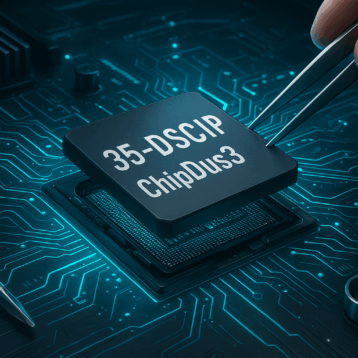
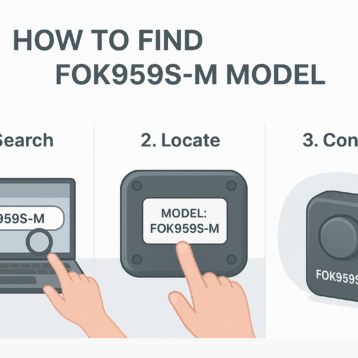


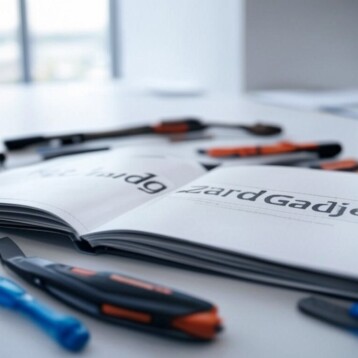

![How to Reset Insignia TV [Step-By-Step Guide]](https://thefutureofthings.com/wp-content/uploads/2025/01/Insignia-Roku-TV-358x358.png)

